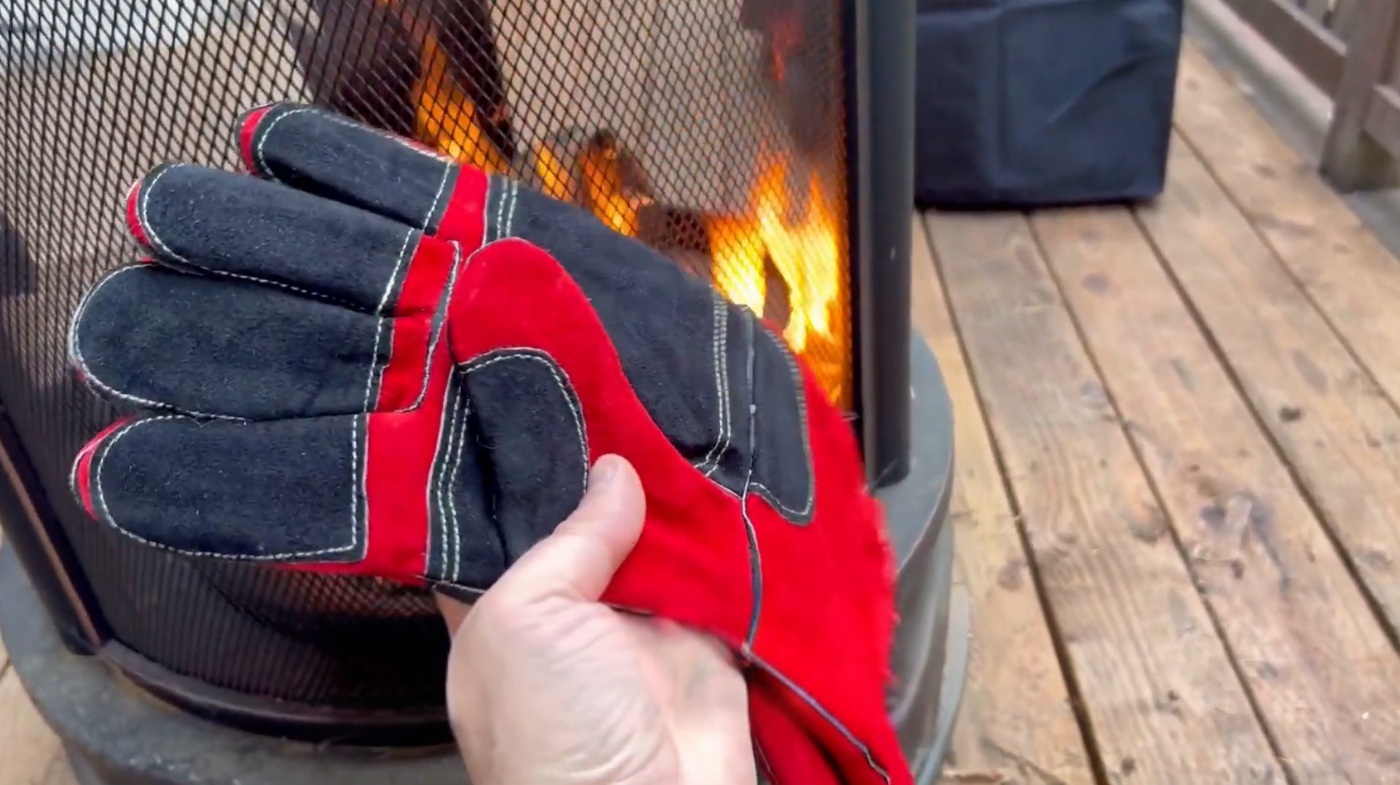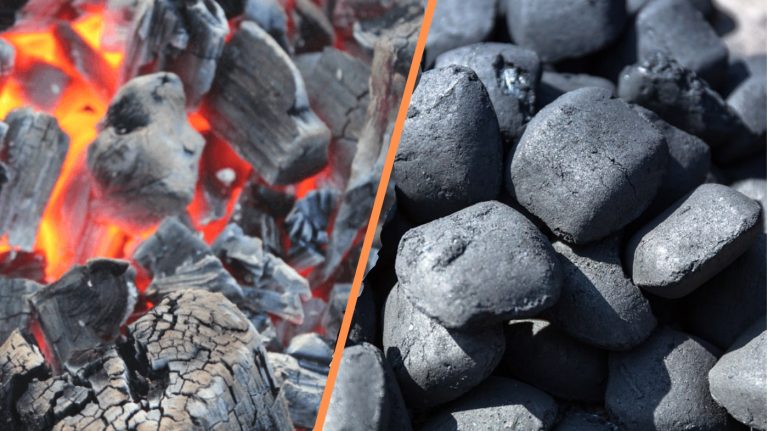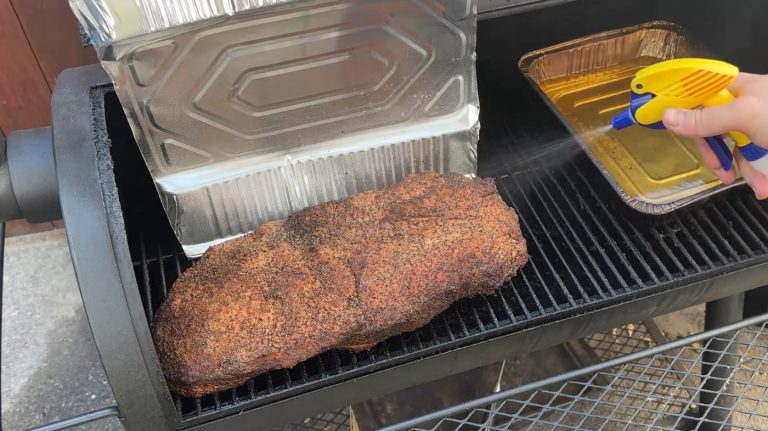Are Welding Gloves Good for BBQ? Key Facts to Know
You can rely on welding gloves for strong heat and spark protection while BBQing, as they handle temperatures up to 932°F and shield your forearms.
However, their thick leather and extended cuffs limit dexterity and tactile control, making delicate food handling harder. They also lack food-safe materials and antimicrobial features, posing hygiene risks.
Proper cleaning and maintenance are essential to preserve safety and durability. Exploring glove features will help you balance protection with cooking precision.
Key Takeaways
- Welding gloves offer excellent heat resistance and protect hands and forearms from intense BBQ heat and sparks.
- Their thick, rigid leather construction limits finger dexterity and tactile sensitivity for delicate food handling.
- Welding gloves lack antimicrobial properties and food safety certifications, posing contamination risks during food preparation.
- Bulkiness and stiffness reduce precision tasks like flipping, seasoning, and temperature gauging on the grill.
- Proper cleaning and maintenance are required, but welding gloves are not designed for hygienic or safe direct food contact.
Heat Resistance of Welding Gloves
While welding gloves are primarily designed for industrial tasks, their heat resistance qualities make them well-suited for BBQ use as well.
You’ll find that standard welding gloves can withstand continuous heat over 500°F and brief spikes up to 1,000°F, comfortably covering typical BBQ grill temperatures that rarely exceed 700°F.
Proper insulation and material layering, similar to techniques used in heat retention, enhance their protective performance.
Standard welding gloves handle continuous heat above 500°F, perfect for typical BBQ grill temperatures under 700°F.
Gloves made of multi-layered aluminized materials reflect up to 95% of radiant heat, adding an extra layer of protection when handling hot surfaces.
Leather gloves, especially cowhide or goatskin, tolerate about 200°F before charring, suitable for moderate heat.
For higher heat exposure, gloves reinforced with Kevlar or carbon fiber offer resistance up to 800°F and even 2,000°F briefly.
Protection and Safety Features
You need gloves that provide reliable heat and spark protection to handle the intense conditions of BBQ cooking safely. Smoking garlic low and slow at 150–180°F is essential to maximize flavor absorption, a temperature range that gloves should protect against during cooking.
Look for designs with reinforced leather padding that shields your hands from sparks and direct flames. Extended arm coverage is essential to protect your forearms from hot splatters and accidental burns during grilling.
Many high-quality gloves feature an extra-long 16-inch sleeve made from double-layer reinforced leather to maximize protection.
Heat and Spark Protection
Because welding gloves are engineered for extreme heat exposure, they provide superior protection against the intense flames and sparks encountered during BBQ activities.
Their double-layer cowhide leather construction resists temperatures up to 932°F (500°C), surpassing typical BBQ gloves. This heat resistance prevents burns from direct flame contact or hot cooking surfaces.
Additionally, welding gloves feature reinforced stitching and thick padding that block sparks and hot embers, reducing flare-up injuries. The natural flame-resistant leather and fire retardant coatings ensure durability and safety near open flames.
Using gloves made from materials with slow burn rate can improve safety during long exposure to heat.
While designed for welding, these gloves’ certified heat and spark protection, including compliance with EN407 standards, make them reliable for managing high-heat grilling tasks safely and effectively, minimizing burn risks during BBQ operations.
Furthermore, many models include an inside lining made of 100% soft cotton that absorbs sweat and adds comfort during prolonged use.
Extended Arm Coverage
Beyond heat and spark protection, welding gloves also provide extended arm coverage that considerably enhances safety during BBQ grilling.
Their sleeves, typically 14 to 16 inches long, shield your forearms from hot embers, flames, and sharp debris. This extended protection reduces risks of burns and cuts when you reach into grills or smokers.
Constructed from thick, double-reinforced cowhide leather with durable stitching, these gloves offer superior abrasion and puncture resistance.
The heat-resistant leather meets EN407 standards, withstanding temperatures up to 932°F (500°C). However, it is important to note that welding gloves tend to be less flexible, which can limit dexterity for precision tasks during grilling.
A soft cotton lining ensures comfort without sacrificing safety, while ergonomic design maintains dexterity. Keep in mind, the longer sleeves require regular cleaning and may slightly limit precision, but their enhanced forearm coverage markedly improves protection during intense BBQ tasks.
Durability and Material Strength
A welding glove’s durability and material strength directly impact its effectiveness and safety during BBQ use.
Constructed primarily from thick, double-reinforced leather with fire retardant coatings, these gloves resist heat up to 932°F (500°C) and provide robust protection against sparks, flames, and physical abrasions.
The integration of aramid fibers and cotton linings enhances cut resistance and thermal insulation, ensuring your hands remain shielded during prolonged exposure to high heat.
These qualities make welding gloves suitable for handling hot surfaces but less suited for tasks requiring fine touch due to their material composition.
While the leather offers superior toughness compared to silicone gloves, it can stiffen after repeated heat exposure and cleaning, potentially reducing flexibility.
The gloves’ material strength also supports handling hot, heavy objects safely but requires proper care to prevent moisture damage, which could compromise their protective qualities during BBQ activities.
However, welding gloves are generally less dexterous and may not be ideal for delicate tasks like meat shredding due to their bulk and stiffness.
Dexterity and Usability Limitations
While welding gloves offer excellent heat resistance, their bulkiness and rigid construction considerably limit your dexterity during BBQ tasks. Maintaining a consistent temperature in BBQ is crucial, and gloves that hinder quick adjustments can negatively affect cooking control.
Welding gloves protect against heat but their bulkiness hinders the fine dexterity needed for BBQ tasks.
The thick leather and heavy insulation reduce finger flexibility and tactile sensitivity, impairing your ability to perform precise movements such as turning small meat pieces or handling delicate utensils.
Oversized fingers and excess material cause awkward, clumsy handling, increasing the risk of dropping food or mishandling tools.
Limited wrist and finger mobility slows down your responsiveness and accelerates hand fatigue during extended grilling. Additionally, welding gloves stiffen after cleaning, further diminishing their usability.
This loss of tactile feedback and flexibility compromises safe, efficient BBQ preparation, making welding gloves less practical for tasks demanding fine motor control and precise grip.
It is important to note that leather gloves offer durability and insulation, which is why they are often chosen despite these limitations.
Comparison With Bbq-Specific Gloves
When comparing welding gloves to BBQ-specific gloves, you’ll notice significant differences in heat resistance, material construction, and usability tailored to their distinct applications.
Welding gloves offer superior heat resistance with thick leather and fire-retardant coatings, designed for extreme temperatures and abrasion.
However, they tend to stiffen with heat and moisture, which can affect flexibility. Their durability to endure frequent use and exposure to heat and grease makes them reliable for tough grilling conditions. Because of their thickness, welding gloves are better suited for handling intense, short bursts of heat, similar to how mesquite burns hotter and faster in smoking.
BBQ gloves use Nomex or silicone blends, optimizing heat protection while maintaining flexibility and grip. This is vital for handling greasy, slippery surfaces and delicate food items.
You’ll find welding gloves bulkier and less dexterous, limiting precision in cooking tasks. BBQ gloves prioritize comfort, individual finger articulation, and grip enhancement, enabling better control during grilling.
Cleaning and Moisture Considerations
When using welding gloves for BBQ, you need to manage their cleaning challenges carefully, as leather stiffens and degrades with moisture and harsh scrubbing. These gloves absorb sweat and grime, increasing discomfort and risking damage if not maintained properly.
To preserve their protective qualities, wipe them gently after use, allow thorough air drying, and apply leather conditioner regularly.
Their durability depends significantly on proper maintenance and avoiding exposure to excessive moisture that can compromise the leather quality. Additionally, unlike butcher paper, welding gloves are not disposable and require ongoing care to maintain their effectiveness and hygiene.
Cleaning Challenges
Because welding gloves are made from thick leather that absorbs oils and moisture, cleaning them after BBQ use presents distinct challenges. You’ll find that grease and food residues penetrate deeply, making soap and water only partially effective.
Avoid submerging gloves fully; moisture trapped inside can foster mold growth and degrade leather integrity. These gloves often require specialized cleaning methods to maintain their durability.
Instead, use gentle hand washing with mild soap and controlled water exposure, carefully preventing water from seeping past the wrist seams.
Thoroughly air dry gloves away from direct heat to preserve their protective qualities and prevent bacterial growth. Proper drying is crucial to avoid moisture retention, which can damage the leather over time.
Unlike silicone BBQ gloves, welding gloves lack waterproof surfaces, so repeated soiling and incomplete cleaning often cause stubborn stains and odors, reducing glove lifespan.
Moisture Absorption Issues
Cleaning welding gloves after BBQ use reveals their inherent moisture absorption traits, which directly affect comfort and safety.
Leather gloves absorb sweat and external moisture, while the cotton lining wicks perspiration away, reducing discomfort during heat exposure.
However, absorbed moisture can stiffen leather, impairing flexibility and grip, which compromises safe handling of hot tools. Retained dampness also traps heat, increasing internal temperature and promoting bacterial growth if gloves aren’t properly aired out.
Since welding gloves aren’t waterproof, exposure to marinades or steam requires careful moisture control to prevent material degradation and loss of heat resistance.
Unlike dedicated BBQ gloves, welding gloves lack the specialized heat-resistant materials that help maintain performance despite moisture exposure.
Avoid saturating gloves during cleaning; instead, wipe them gently and air dry to maintain their protective properties and ensure long-term durability in a BBQ environment.
It is also important to note that unlike specialized grilling gloves made from aramid fibers, welding gloves may not provide the same level of heat resistance or durability under high-temperature conditions.
Maintenance Tips
Although welding gloves offer excellent heat protection, proper maintenance is essential to preserve their performance and safety. After use, rinse gloves with a damp cloth to remove residues.
For leather gloves, clean with cold water and saddle soap, avoiding machine washing to protect texture and flexibility. Wearing protective gear such as gloves and safety glasses during cleaning helps ensure safety.
Synthetic or coated gloves tolerate mild detergent and water; scrub stains gently with a soft brush. After cleaning, pat gloves dry with a towel and air dry leather gloves away from direct heat or sunlight to prevent stiffness.
Store gloves in a cool, dry place without folding to maintain shape. Inspect gloves regularly, replacing any with cracks or stiffness.
Avoid harsh chemicals, extended soaking, and high heat during drying to prevent fiber damage and compromised protection.
Suitability for Handling Hot Grill Tools
When handling hot grill tools, welding gloves provide exceptional heat resistance that can protect you from burns even during direct contact with metal grates or coals.
Designed to withstand temperatures exceeding 932°F (500°C), their heat-resistant leather and Kevlar insulation minimize heat transfer effectively. These gloves are also made with high-quality materials to ensure extreme heat protection and durability.
The extended cuffs shield your wrists and lower forearms from radiant heat and accidental sparks, enhancing safety during grilling.
The gloves’ thickness and robust construction allow secure gripping of heavy or awkward tools like charcoal baskets and large spatulas, reducing slippage risks.
Using welding gloves in wet or rainy conditions requires extra caution, as moisture can reduce their insulating properties and increase safety hazards related to heat and moisture.
However, their bulkiness can slightly limit dexterity, so while they excel at handling hot, heavy tools, they may not be ideal for tasks requiring fine motor skills.
Impact on Food Handling and Cooking Precision
Since welding gloves are crafted from heavy, heat-resistant materials like thick leather and Kevlar, they inherently limit the tactile sensitivity required for precise food handling tasks.
Their bulkiness and stiffness reduce your fine motor skills, making it difficult to perform delicate actions such as seasoning or flipping food accurately.
Unlike FDA-approved food handling gloves—made from nitrile or latex and designed for dexterity—welding gloves lack antimicrobial treatments and have a rough texture that can damage food or cause sticking.
This loss of tactile feedback also impairs your ability to gauge subtle temperature changes, increasing risks of overcooking or undercooking.
Additionally, poor glove quality and high defect rates can lead to contamination risks, which welding gloves do not address due to their manufacturing standards not designed for food safety (glove quality and defect rates).
Long-Term Maintenance and Care Requirements
Handling food with welding gloves demands careful attention to their upkeep to preserve safety and performance. Clean leather gloves with a damp cloth; avoid soaking or machine washing.
Synthetic gloves may allow machine washing—always check the manufacturer’s guidance. Inspect frequently for holes, tears, or stiffness, and replace damaged gloves immediately.
It is also important to inspect gloves before and after use to identify wear and contamination. Store gloves flat in a cool, dry place away from sunlight and chemicals to prevent degradation.
| Maintenance Aspect | Key Action | Safety Benefit |
|---|---|---|
| Cleaning | Use damp cloth or follow instructions | Preserve heat resistance |
| Inspection | Check seams and flexibility regularly | Prevent injury from failure |
| Storage | Keep cool, dry, flat, and away from chemicals | Maintain glove integrity |
Proper care extends glove life, but never compromise safety.
Frequently Asked Questions
Can Welding Gloves Be Safely Used With Food Without Contamination?
You shouldn’t use welding gloves directly with food because they aren’t certified food-safe and can harbor contaminants. Their materials, like leather, may absorb residues, increasing cross-contamination risks.
They lack testing for microbial transfer or chemical impermeability relevant to food handling. Instead, choose gloves labeled for food contact and designed for heat resistance if needed.
Always practice proper hand hygiene and glove changes to maintain safety and prevent contamination during food prep.
Do Welding Gloves Retain Odors From Smoke or Food?
Did you know leather welding gloves can trap odors deeply, making over 70% of users report persistent smoke smells? Because leather’s porous fibers absorb oils and food scents, you’ll find odors linger despite cleaning.
To maintain safety and comfort, you must clean them carefully with leather-specific products and dry them thoroughly. Otherwise, trapped smells can affect your cooking experience and hygiene, so regular maintenance is essential to reduce odor retention.
Are Welding Gloves Suitable for Use in Outdoor BBQ Competitions?
You’ll find welding gloves highly suitable for outdoor BBQ competitions due to their superior heat resistance and durable construction. They protect your hands and forearms from extreme temperatures, sparks, and sharp tools.
While they may be bulkier than BBQ-specific gloves, their ruggedness and long-lasting materials guarantee safety during intense cooking tasks. Just remember, their reduced dexterity might require some adjustment for precise maneuvers.
Can Welding Gloves Be Customized or Sized for Better Fit?
You’d think it’s impossible to find gloves that fit like a second skin, but welding gloves can indeed be customized or sized for a perfect fit. Manufacturers offer various sizes and even custom tailoring based on your measurements.
Features like wrist straps, pre-curved fingers, and adjustable cuffs enhance fit and safety. Proper sizing improves dexterity, reduces slippage, and guarantees maximum protection from heat and sparks during demanding tasks.
How Do Welding Gloves Perform in Cold Weather BBQ Conditions?
You’ll find welding gloves offer excellent thermal insulation and protect your hands from cold and heat during outdoor BBQs. Their thick leather traps air, blocking wind chill, and extended cuffs shield your wrists.
However, expect reduced dexterity due to stiffness in cold weather, making fine movements harder. While they keep you safe from burns and punctures, you might struggle with precise handling, so balance protection with your need for flexibility.
Grill Smarter: Pick Gloves That Match Your Style
Welding gloves offer excellent heat resistance and durability, making them a strong contender for BBQ tasks. However, their bulkiness can limit dexterity, affecting precise food handling and cooking control.
While they protect well against high temperatures and sparks, are you willing to sacrifice some usability for that safety? If you prioritize protection over finesse, welding gloves work, but for superior BBQ performance, gloves designed specifically for grilling might serve you better in the long run.






